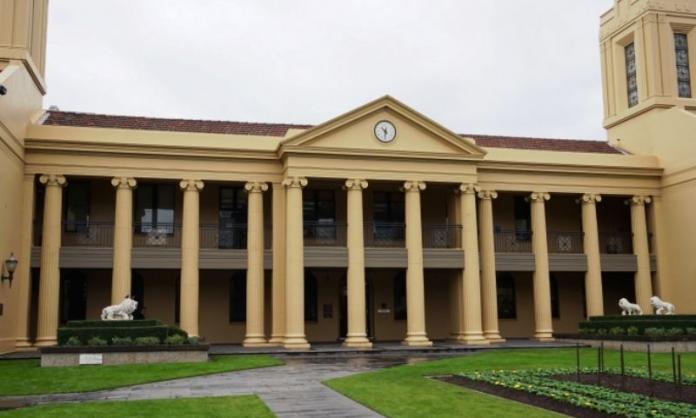The unfolding scandal engulfing Melbourne’s Wesley College has been a long time coming. The truth-telling by young women students about their experiences of rape and the pervasiveness of sexual harassment show it has a serious problem with normalised sexism. As do the sexist displays by its male students.
As someone who endured their entire thirteen-year school life at this elitist institution, I can attest first-hand to the culture of entitled misogyny behind the elaborate St Kilda Road facade.
It is simply not true, as some are claiming, that the public displays of sexism by Wesley boys in 2021 are new or isolated incidents. Indeed, if misogyny were personified as a Wesley student, he would be a celebrated prefect. This was plain to see when I was there as a student in the 1990s.
Wesley, originally an all-boys school, has been fully co-educational since the 1980s. As shown by recent events, the change to co-ed has done nothing to undermine the school’s sexist culture. If anything, it has highlighted that many Wesley boys are content to be sexist creeps to women of their own social class, mirroring events in federal parliament.
In our classrooms, boys routinely harassed girls, chanting degradingly “it smells like fish” during lessons, for example. And young female teachers copped gross insults from belligerent sexist brutes. Boys created very public ranking systems of sexual desirability for female students at the school. Those deemed ugliest were vulnerable to more ridicule and openly canvassed as “suitable” for sexual assault—as long as a bag was placed over their head.
The purple and yellow blazer of Wesley is a symbol of power and privilege. Students learn to look down on the plebs going to government schools as second-rate people at best. This was more than just attitude—sometimes violence followed. I remember mass physical brawls initiated by gangs of thuggish, entitled Wesley boys against the “wannabe private school” boys of public school Melbourne High down the road in South Yarra.
The ruthlessness of competition and importance of winning was a natural part of the Wesley culture. In fact, we learned that competition against other elite children at their grammar schools was like war. The school’s socialisation and rituals were aimed at imbuing an understanding that Wesley students were the best, destined to be leaders in our chosen fields and entitled to a life of inherited rights associated with those born into wealth.
There is something of an assumption that Wesley, with its Wesleyan Methodist roots, has a more liberal ethos than other elite private schools—a selling point to holier-than-thou do-gooder middle-class Melbourne families. This is a smokescreen. Wesley College is a powerful institution that has schooled captains of industry and numerous politicians over its 155-year history, including two Liberal Party prime ministers, one being Robert Menzies.
Former student and “history war” warrior for the racist revisionist right, historian Geoffrey Blainey, describes in his official history of the school that only the wealthiest 5 or 10 percent of society could afford the fees, and hence were better equipped to advance into plum positions in business or politics.
It was hard for boys like me who did not fit the masculine norms. You learned to survive, but Wesley was a dangerous place. Homophobia went hand in glove with misogyny. I remember clearly a homophobic teacher ridiculing an effeminate male student in a year eight science class. “Get out and go and do hairdressing and listen to Madonna”, the teacher said. The entire class laughed and turned on this student.
Anyone who didn’t fit was fair game. I avoided most of this because I was pretty good at sport and because I had a brother with a reputation for using his fists when the need arose.
Wesley College was built to teach and foster the idea of class power and privilege, of which misogyny is a crucial part. How could the administration of this school that embodies such self-entitled elitism act surprised when its male students perform their sexist rituals in public?








